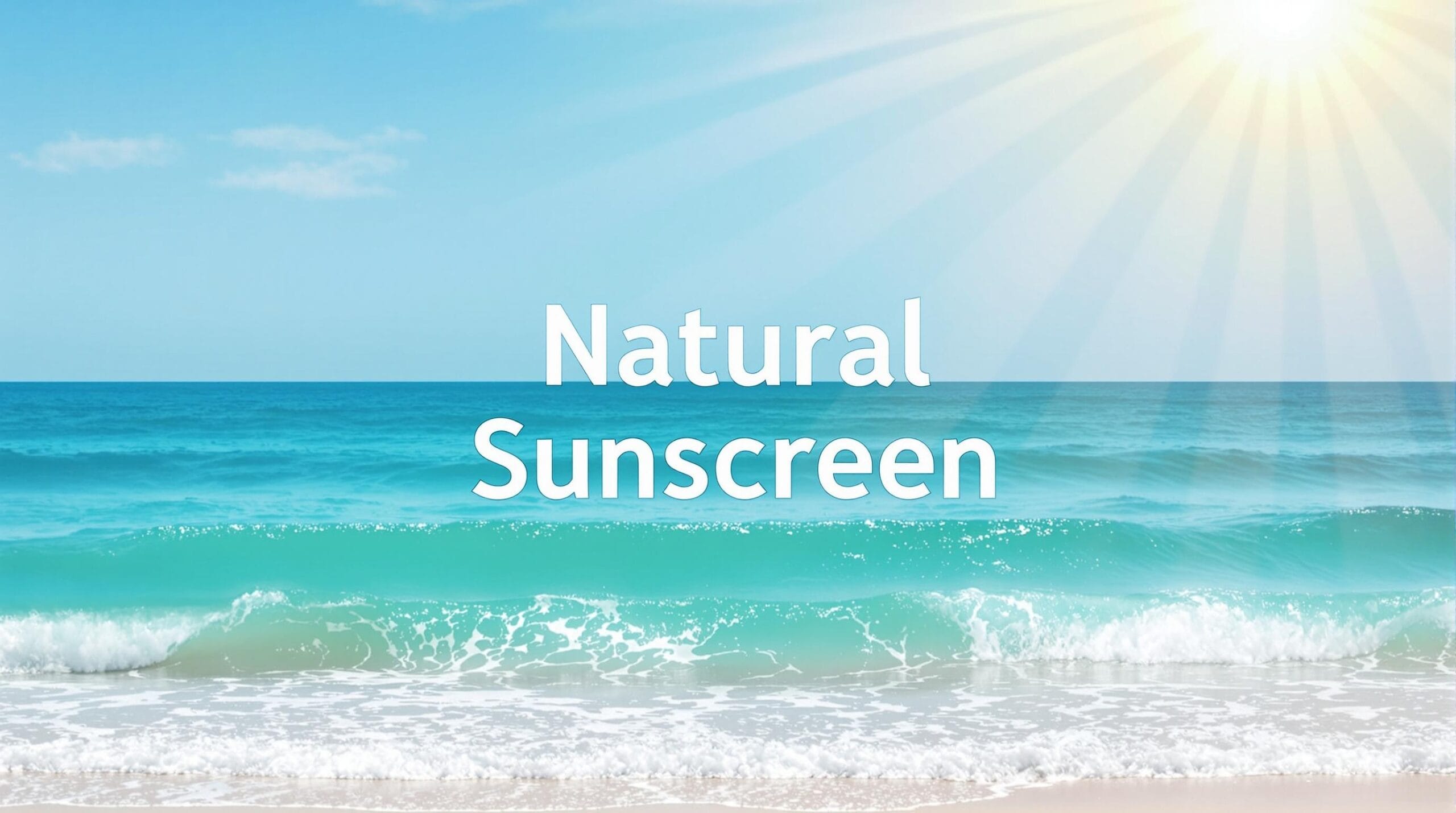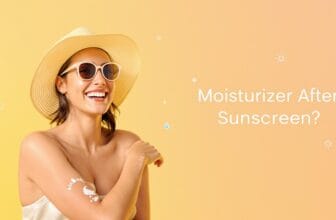
Natural sunscreens have gained popularity as consumers become more aware of their choices’ impact on health and the environment. Traditional chemical sunscreens, while effective, often contain ingredients that can irritate sensitive skin and disrupt marine ecosystems. The rise in awareness has prompted many to seek alternatives that are safe for both humans and nature.
Experts emphasize the urgency of this shift. Dermatologists warn against the long-term effects of chemical sunscreens on sensitive skin, while environmentalists highlight their role in coral bleaching. A growing body of research supports these claims, urging consumers to reconsider their options and make informed decisions. Turning to natural sunscreens represents a safe, eco-friendly way to protect our skin from harmful UV rays while safeguarding our planet’s delicate ecosystems.
What Defines a Natural Sunscreen?
Natural sunscreens are defined by their use of ingredients derived from nature, which distinguish them from chemical sunscreens. Chemical options often use synthetic compounds such as oxybenzone or avobenzone, which absorb UV light. In contrast, natural sunscreens rely on minerals like zinc oxide and titanium dioxide, known for physically blocking UV rays.
These natural ingredients form a protective barrier on the skin’s surface, effectively reflecting or scattering harmful UV rays. Unlike their chemical counterparts, natural sunscreens are less likely to cause skin irritation. This quality makes them an attractive option for those with sensitive skin or allergies. Leading health authorities and skincare experts also recognize natural sunscreens for their minimal environmental impact, further solidifying their appeal.
Ingredients You Can Trust
- Zinc Oxide: Renowned for its broad-spectrum UV protection, zinc oxide is effective against both UVA and UVB rays. It is gentle on the skin, making it ideal for sensitive skin types.
- Titanium Dioxide: This mineral offers protection primarily against UVB radiation. Combined with zinc oxide, it enhances sunblock activity and is known for its non-irritating properties.
These minerals are favored for their stability and safety. They provide consistent protection without penetrating the skin deeply, minimizing the risk of allergic reactions. Thus, mineral-based sunscreens are often labeled as ‘non-toxic’ and are celebrated for serving efficacy and skin health benefits.
The Toxic Trio: What to Avoid
- Oxybenzone: Linked to hormone disruption and coral reef damage, leading many to avoid products containing this chemical.
- Octinoxate: Another UV filter known to affect marine ecosystems negatively, contributing to coral bleaching.
- Parabens: Preservatives that have potential carcinogenic effects and can disrupt hormone functions.
Avoiding these ingredients can reduce the potential harm to both your health and the environment, emphasizing the importance of reading labels and making conscious decisions.
How to Choose the Right Natural Sunscreen
Choosing the right sunscreens involves considering various factors to ensure optimal protection and satisfaction. First, identify your skin type. Those with oily skin might prefer lightweight, non-greasy formulas, whereas individuals with dry skin may benefit from hydrating options. Assess the SPF rating according to your daily activities; higher SPF is preferable for prolonged exposure.
Look for broad-spectrum protection, which shields against both UVA and UVB rays. Water resistance is essential for beach days or sports. Check for additional benefits, like mineral enrichment or added antioxidants. Lastly, consider personal preferences for fragrance and texture, choosing options that suit your lifestyle and comfort.
The SPF Dilemma: How Much is Enough?
SPF, or Sun Protection Factor, indicates the level of protection a sunscreen offers against UVB rays. An SPF of at least 30 is recommended for everyday use, providing sufficient defense during casual outdoor activities. For extended periods under the sun, higher SPFs, like 50, are better suited to enhance protection.
The Truth About Sunscreen Labels: Demystifying Claims
Sunscreen labels can often be confusing with terms such as “waterproof” or “hypoallergenic.” In reality, no sunscreen is truly waterproof; “water-resistant” more accurately describes a product’s ability to maintain effectiveness after exposure to water or sweat. Likewise, “hypoallergenic” implies minimal allergens are used, but individual reactions may still occur.
Understanding these claims helps in choosing products that meet personal needs. Look for recommendations from dermatologists and genuine user reviews to ensure authenticity and avoid misleading marketing strategies. Reliable labels will be transparent about ingredients and their effects on the skin.
Application All-Star: How to Apply Natural Sunscreen
Proper application of natural sunscreen is crucial for effective protection. Start by applying an even layer to all exposed areas of the skin, at least 15 minutes before sun exposure. Make sure to cover difficult spots like the ears, neck, and feet.
Reapply your sunscreen every two hours, or immediately after swimming or perspiring heavily. For face applications, consider using specific sunscreen designed for facial skin to avoid pore-cl clogging. This routine helps maintain consistent protection against harmful UV rays.
Myths and Misconceptions: Busting Sunscreen Stories
Many myths surround sunscreen, especially concerning natural options. A common misconception is that natural sunscreens do not provide adequate protection. Studies show that mineral-based sunscreens offer effective broad-spectrum protection comparable to their chemical counterparts.
Another myth is that sunscreen is only necessary on sunny days. UV rays can penetrate clouds, and damage occurs even during overcast weather. Educating oneself with evidence-backed information ensures maximum protection and healthy skin practices.
Top Natural Sunscreen Brands Worth Trying
- Badger: Known for its use of organic ingredients and eco-friendly formulas, Badger offers a range of SPF options for various needs.
- Blue Lizard: This brand is celebrated for its mineral-based sunscreens, providing reliable protection for sensitive skin types.
- ThinkSport: Ideal for athletes and active individuals, ThinkSport’s sunscreens combine high SPF ratings with water resistance.
Consumer reviews praise these brands for their effective, skin-friendly formulations and commitment to environmental safety. Exploring these options can lead to satisfying sun protection choices.
Sun Safety Beyond Sunscreen: Extra Measures
While sunscreen plays a crucial role in UV protection, additional measures can enhance safety. Wear protective clothing like hats and sunglasses, and seek shade during peak sun hours. Timing sun exposure wisely, especially between 10 a.m. and 4 p.m., minimizes risks.
Make sun safety a priority, integrating a holistic approach to protection. Combine these habits with diligent sunscreen use to maintain skin health and prevent sun damage over time.
Conclusion: Embrace Natural Protection
Embracing natural sunscreens is not just a trend but a proactive step toward healthier skin and a healthier planet. These products offer effective protection without the potential drawbacks of chemical alternatives. Making informed choices helps shield your skin and supports a sustainable future.
The Secret Timing You Didn’t Know for Applying Sunscreen on Your Face! >>>







